
Explore South Africa's Popular Succulents: A Guide to Common Varieties

South Africa is home to a diverse range of plant species, including a wide variety of succulents. Succulents are plants that have adapted to arid environments by developing thick, fleshy leaves or stems that store water. These plants have become increasingly popular in gardens and indoor spaces due to their unique and striking appearance, as well as their ability to thrive in low-water conditions.
We will explore some of the most common succulents found in South Africa. We will discuss their characteristics, growing requirements, and tips for care and maintenance. Whether you are a seasoned succulent enthusiast or just starting your collection, this guide will provide you with valuable information to help you choose and care for these fascinating plants. So, let's dive into the world of South Africa's popular succulents!
- Learn about the different types of succulents found in South Africa
- Discover where to find and buy these popular succulents
- Get tips on how to care for and propagate these succulents
- Explore the unique characteristics of each succulent variety
- Find out which succulents are easy to grow for beginners
- Learn about the best growing conditions for South African succulents
- Find inspiration for incorporating these succulents into your garden or home
- Discover the cultural and historical significance of these succulents in South Africa
- Learn about the medicinal and culinary uses of South African succulents
- Get advice on how to deal with common pests and diseases that affect these succulents
- Frequently Asked Questions
Learn about the different types of succulents found in South Africa
Succulents are a diverse group of plants that are known for their ability to store water in their leaves, stems, and roots. South Africa is home to a wide variety of succulent species, many of which are highly sought after by plant enthusiasts around the world. In this guide, we will explore some of the common succulent varieties found in South Africa.
1. Aloe vera
Aloe vera is perhaps one of the most well-known succulents globally. This plant has thick, fleshy leaves that contain a gel-like substance with numerous medicinal properties. Aloe vera plants are native to South Africa and are often used in skincare products and natural remedies.
2. Lithops
Lithops, also known as "living stones," are unique succulents that are known for their camouflage-like appearance. These plants have a low-growing habit and blend seamlessly into their rocky surroundings. Lithops are native to South Africa and are a fascinating addition to any succulent collection.
 Unveiling Rare Succulent Species: Exquisite & Elusive Varieties
Unveiling Rare Succulent Species: Exquisite & Elusive Varieties3. Haworthia
Haworthia plants are small succulents that are native to South Africa. They are characterized by their rosette-shaped leaves that form tight clusters. Haworthia plants come in various shapes and colors, making them a popular choice for indoor gardening or as decorative additions to gardens.
4. Crassula ovata
Crassula ovata, commonly known as the jade plant or money tree, is a popular succulent with thick, oval-shaped leaves. This plant is native to South Africa and is believed to bring good luck and prosperity to its owner. It is often grown as a houseplant and can be easily propagated from stem cuttings.
5. Echeveria
Echeveria is a genus of succulent plants that originate from South Africa. They are known for their rosette-shaped leaves that come in various shades of green, blue, and purple. Echeverias are prized for their ornamental value and are often used in succulent arrangements and container gardens.
6. Stapelia
 Discover the Stunning Succulent with Long Stems and Pink Flowers
Discover the Stunning Succulent with Long Stems and Pink FlowersStapelia is a genus of succulent plants that are native to South Africa. These plants are known for their unique star-shaped flowers that emit a strong odor to attract pollinators. Stapelias are often grown as drought-tolerant plants in rock gardens or as potted specimens.
- Aloe vera
- Lithops
- Haworthia
- Crassula ovata
- Echeveria
- Stapelia
These are just a few examples of the many succulent varieties found in South Africa. Whether you are a seasoned succulent enthusiast or just starting your collection, exploring the diverse succulents of South Africa is sure to be a rewarding experience.
Discover where to find and buy these popular succulents
South Africa is known for its diverse and breathtaking succulent plants. If you're a succulent enthusiast or simply looking to add some unique plants to your collection, this guide will help you navigate through the popular varieties and where to find them.
1. Karoo Rose (Adromischus Cristatus)
The Karoo Rose, also known as the Crinkle-Leaf Plant, is a stunning succulent with crinkled, rose-shaped leaves. You can find this variety at local plant nurseries and online succulent shops. It thrives in well-draining soil and requires moderate sunlight.
2. Living Stones (Lithops)
Lithops, commonly known as Living Stones, are small succulents that resemble pebbles or stones. They are highly sought after by collectors for their unique and camouflage-like appearance. You can find them at specialized succulent nurseries and online retailers. These plants prefer bright light and minimal watering.
3. Crassula ovata (Jade Plant)
The Jade Plant is a popular succulent variety that is often grown as a houseplant. It has thick, fleshy leaves and can grow into a small tree over time. You can find Jade Plants at garden centers, plant nurseries, and even some supermarkets. They require bright light and infrequent watering.
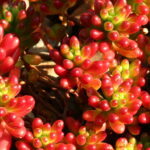 Vibrant Red Succulents: A Stunning Addition to Your Garden
Vibrant Red Succulents: A Stunning Addition to Your GardenString of Buttons is a trailing succulent with stacked, button-like leaves. This variety is excellent for hanging baskets or as a ground cover. You can find it at local plant nurseries and online stores. String of Buttons thrives in bright, indirect light and well-draining soil.
5. Echeveria
Echeverias come in various shapes, colors, and sizes, making them a favorite among succulent enthusiasts. These rosette-shaped succulents can be found at garden centers, succulent specialty stores, and online retailers. They prefer bright light and well-draining soil.
6. Aloe Vera
Aloe Vera is a well-known succulent renowned for its medicinal properties. It has thick, spiky leaves and produces vibrant yellow flowers. You can find Aloe Vera plants at garden centers, health stores, and even some supermarkets. They require bright light and infrequent watering.
When purchasing succulents, always ensure they are sourced ethically and legally. Avoid buying plants from illegal collectors or unauthorized sellers to protect these unique species and their habitats.
Now that you know where to find and buy these popular succulents, you can expand your collection and enjoy the beauty and resilience of these South African treasures.
Get tips on how to care for and propagate these succulents
Succulents have gained immense popularity in recent years for their unique shapes, vibrant colors, and low-maintenance requirements. South Africa, known for its diverse plant life, is home to a wide range of succulent species. In this guide, we will explore some of the common varieties found in South Africa and provide valuable tips on how to care for and propagate them.
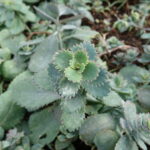 Exploring the Diversity: Various Succulent Types in My Collection
Exploring the Diversity: Various Succulent Types in My Collection1. Aloe vera
Aloe vera, also known as the "wonder plant," is one of the most well-known succulents. It is recognized for its gel-filled leaves that offer various medicinal properties. Aloe vera thrives in well-drained soil and requires bright, indirect sunlight. It is essential to water this succulent sparingly, allowing the soil to dry out completely between waterings. Propagation is relatively easy using stem cuttings or offsets.
2. Crassula ovata (Jade Plant)
The Jade Plant is a popular succulent due to its attractive, oval-shaped leaves and its reputation for bringing good luck and prosperity. It prefers bright, indirect sunlight and well-draining soil. Jade Plants are drought-tolerant and should be watered sparingly, allowing the soil to dry out before watering again. Propagation is typically done through leaf or stem cuttings.
3. Haworthia cooperi (Window Haworthia)
The Window Haworthia is a small succulent known for its distinctive translucent leaves that allow sunlight to penetrate. It is best suited for indoor environments with bright, indirect light. This succulent requires minimal watering and should only be watered when the soil is completely dry. Propagation can be done through offsets or by separating clumps of the plant.
4. Echeveria elegans (Mexican Snowball)
The Mexican Snowball is a popular succulent with rosette-shaped, pale blue-green leaves. It thrives in well-draining soil and requires bright, indirect sunlight. Watering should be done sparingly, allowing the soil to dry out between waterings. Propagation can be achieved through leaf or stem cuttings.
5. Lithops (Living Stones)
Lithops, commonly known as Living Stones, are unique succulents that mimic the appearance of stones to protect themselves from predators. These plants prefer bright, indirect sunlight and a well-draining soil mix specifically designed for succulents. Watering should be minimal, especially during their dormant period. Propagation can be challenging, but it is typically done through division or seed germination.
By following these care and propagation tips, you can enjoy the beauty of South Africa's popular succulents in your own garden or indoor space. Remember to tailor the care routine to each specific variety, as they may have slightly different requirements. Happy succulent gardening!
Explore the unique characteristics of each succulent variety
 Find Long-Stemmed Succulents: Discover Elongated Varieties
Find Long-Stemmed Succulents: Discover Elongated VarietiesSouth Africa is home to a wide array of succulents, each with its own unique characteristics and beauty. From the iconic Aloe to the fascinating Crassula, there is a succulent variety to suit every plant lover's taste. In this guide, we will take a closer look at some of the most popular succulents found in South Africa and discover what makes them so special.
Aloe
One of the most well-known succulents, the Aloe plant is recognized for its thick, fleshy leaves and striking flower spikes. With over 500 species, Aloe plants come in various shapes, sizes, and colors. These hardy succulents are known for their ability to tolerate drought and thrive in hot, arid conditions. The gel inside their leaves is also renowned for its healing properties and is often used in skincare products.
Crassula
The Crassula genus encompasses a vast range of succulents, commonly known as "jade plants" or "money plants." These succulents are characterized by their thick, shiny leaves and compact growth habit. Crassulas come in different shapes and sizes, from the well-loved Crassula ovata (commonly known as the Jade Plant) to the unique Crassula perforata with its stacked leaf arrangement. These succulents are relatively easy to care for and make great additions to any indoor or outdoor garden.
Euphorbia
Euphorbias are a diverse group of succulents that vary greatly in appearance. From the tall and spiky Euphorbia tirucalli (commonly known as the Pencil Cactus) to the compact and colorful Euphorbia milii (Crown of Thorns), there is a Euphorbia for every succulent enthusiast. Some Euphorbias produce milky sap, which can be toxic, so it's important to handle them with care. These succulents are known for their architectural shapes and make striking focal points in any garden.
Haworthia
Haworthias are small succulents with a rosette-like growth habit. They are often referred to as "Zebra Plants" due to the distinctive white stripes on their leaves. Haworthias come in a variety of shapes and sizes, from the compact Haworthia cooperi to the elongated Haworthia attenuata. These succulents are ideal for indoor cultivation, as they thrive in low-light conditions and require minimal maintenance.
- Aloe: Thick, fleshy leaves and striking flower spikes. Known for their healing properties.
- Crassula: Thick, shiny leaves and compact growth habit. Easy to care for.
- Euphorbia: Diverse group with varying appearances. Architectural shapes and some produce toxic sap.
- Haworthia: Small succulents with rosette-like growth habit. White stripes on leaves. Ideal for indoor cultivation.
Exploring the unique characteristics of each succulent variety is a delightful journey into South Africa's rich plant diversity. Whether you're a seasoned succulent enthusiast or just starting your collection, these popular South African succulents are sure to captivate you with their beauty and resilience.
Find out which succulents are easy to grow for beginners
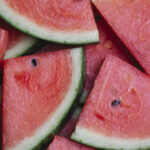 Thriving Potential: Indoor Varieties of Tall Red Succulents
Thriving Potential: Indoor Varieties of Tall Red SucculentsIf you're new to the world of succulents, you'll be happy to know that there are many varieties that are perfect for beginners. These plants are known for their ability to store water, making them low-maintenance and drought-tolerant. Whether you have a green thumb or not, these succulents will thrive with minimal care.
1. Aloe Vera
Aloe Vera is a popular succulent known for its medicinal properties. This versatile plant is easy to grow and requires minimal watering. It can be grown both indoors and outdoors, making it a great choice for beginners. Aloe Vera plants also produce beautiful, vibrant flowers that can add a touch of color to your garden.
2. Echeveria
Echeveria is another beginner-friendly succulent that comes in a wide range of colors and shapes. These rosette-shaped plants are native to Mexico and are known for their stunning foliage. Echeverias thrive in well-draining soil and require moderate watering. With their unique textures and colors, they make great additions to any succulent garden.
3. Jade Plant
The Jade Plant, also known as Crassula ovata, is a popular choice for beginners due to its resilience and adaptability. This succulent has thick, fleshy leaves and is often referred to as the "money plant" or "lucky plant" due to its association with good fortune. Jade plants prefer bright, indirect light and require infrequent watering.
4. Haworthia
Haworthias are small succulents that come in a variety of shapes and patterns. These plants are known for their thick, spiky leaves and are often mistaken for Aloe Vera. Haworthias are low-maintenance and can thrive in both indoor and outdoor settings. They prefer bright, indirect light and require minimal watering.
5. Sedum
Sedums are a diverse group of succulents that come in various sizes and forms. These plants are known for their ability to withstand harsh conditions, making them perfect for beginners. Sedums prefer well-draining soil and require infrequent watering. With their unique textures and colors, they can add visual interest to any succulent collection.
By starting your succulent journey with these easy-to-grow varieties, you'll be able to enjoy the beauty of these plants without the stress of complicated care routines. Remember to provide them with the right amount of sunlight, well-draining soil, and water sparingly. With a little bit of attention, these succulents will thrive and bring a touch of nature to your home or garden.
 Discover the Best Blooming Succulents for Ground Covers
Discover the Best Blooming Succulents for Ground CoversLearn about the best growing conditions for South African succulents
South Africa is known for its diverse and unique plant life, and one category that stands out is its succulents. These fascinating plants have adapted to thrive in arid conditions and are known for their ability to store water in their leaves, stems, or roots. If you're looking to add some South African charm to your garden or indoor space, here's a guide to some of the common succulent varieties you can explore.
1. Aloe Vera
Aloe vera is one of the most well-known succulents worldwide. This versatile plant has thick, fleshy leaves that form a rosette shape. It thrives in well-draining soil and requires plenty of sunlight. Aloe vera is not only aesthetically pleasing but also has numerous medicinal properties, making it a popular choice for both indoor and outdoor gardens.
2. Crassula Ovata (Jade Plant)
The Jade Plant is a popular succulent due to its attractive, thick, oval-shaped leaves. It can thrive in a variety of light conditions, but it prefers bright, indirect sunlight. The plant requires well-draining soil and infrequent watering. With proper care, the Jade Plant can grow into a small tree-like structure, adding a touch of elegance to any space.
3. Haworthia Fasciata (Zebra Plant)
 Discover the Stunning Succulents with Towering Blossoms
Discover the Stunning Succulents with Towering BlossomsThe Zebra Plant is a small succulent that features distinctive white stripes on its dark green leaves. It prefers bright, indirect sunlight and requires well-draining soil. This plant is relatively low-maintenance and can be a great addition to your collection if you're just starting with succulents.
4. Echeveria
Echeveria is a genus of succulents that offers a wide range of colors and shapes. These plants form beautiful rosettes with thick, fleshy leaves. They thrive in well-draining soil and require plenty of sunlight to maintain their vibrant hues. Echeverias are popular choices for container gardens and are often used in succulent arrangements due to their aesthetic appeal.
5. Lithops (Living Stones)
Lithops are unique succulents that have evolved to resemble stones, hence their nickname "living stones." These plants are masters of camouflage and have evolved to blend in with their surroundings to avoid being eaten by animals. Lithops prefer bright, indirect sunlight and minimal watering. Their unusual appearance and ability to mimic stones make them a conversation starter in any succulent collection.
Whether you're a seasoned succulent enthusiast or just starting your collection, exploring South African succulents can bring a touch of exotic beauty to your space. Remember to provide the right growing conditions, including well-draining soil, ample sunlight, and appropriate watering practices, to help these plants thrive and flourish.
Find inspiration for incorporating these succulents into your garden or home
South Africa is home to a diverse range of succulent plants that are not only beautiful but also well-adapted to survive in arid conditions. Whether you're a seasoned gardener or just starting out, adding some of these popular succulents to your collection can bring a unique touch to your garden or home. Here's a guide to some of the common varieties found in South Africa:
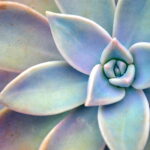 Top Blue-Green Succulents: Enhance Your Collection
Top Blue-Green Succulents: Enhance Your CollectionAloe Vera
Aloe Vera is a well-known succulent that offers both aesthetic appeal and medicinal properties. It is characterized by its fleshy, lanceolate leaves with serrated edges. Aloe Vera is not only easy to care for but also known for its healing properties, making it a popular choice for gardens and even as a potted plant indoors.
Jade Plant
The Jade Plant, also known as Crassula ovata, is a popular choice for indoor succulent gardens. Its small, round leaves and thick stems give it a unique appearance. With proper care, the Jade Plant can grow into a beautiful, tree-like form, making it a centerpiece in any garden or home.
Snake Plant
The Snake Plant, also known as Sansevieria, is a hardy succulent that is perfect for those who tend to forget about watering their plants. It has long, upright leaves with a variegated pattern, adding a touch of elegance to any space. The Snake Plant is not only low-maintenance but also known for its air-purifying qualities, making it ideal for bedrooms or offices.
Ice Plant
Ice Plant, scientifically known as Lampranthus, is a colorful succulent that boasts vibrant flowers. Its trailing habit and daisy-like flowers make it a great choice for hanging baskets or ground covers. The Ice Plant thrives in full sun and well-drained soil, making it an excellent addition to rock gardens or coastal landscapes.
Stonecrop
Stonecrop, also known as Sedum, is a versatile succulent that comes in various shapes and sizes. It has fleshy, thick leaves that can store water, allowing it to withstand dry conditions. Stonecrop is a popular choice for ground covers, borders, and even as a filler in rock gardens.
These are just a few examples of the many succulent varieties found in South Africa. By adding these unique plants to your garden or home, you can create a visually stunning and low-maintenance space that will surely impress. Remember to provide them with the proper care and conditions they need to thrive, and you'll be rewarded with their beauty for years to come.
Discover the cultural and historical significance of these succulents in South Africa
 The Fascinating World of Blooming Succulents: Unveiled
The Fascinating World of Blooming Succulents: UnveiledSucculents have been an integral part of South African culture for centuries. Their unique ability to thrive in arid conditions has made them essential in the daily lives of the people, providing food, medicine, and even spiritual significance. In this guide, we will explore some of the most common succulent varieties found in South Africa and delve into their cultural and historical importance.
The Aloe Vera (Aloe barbadensis)
One of the most well-known succulents globally, the Aloe Vera, is native to South Africa. This versatile plant has been used for thousands of years for its medicinal properties. The gel found in the leaves is renowned for its healing and soothing effects on the skin, making it a popular ingredient in skincare products. Additionally, Aloe Vera is also used in traditional African medicine to treat various ailments such as burns, digestive issues, and arthritis.
The Spekboom (Portulacaria afra)
The Spekboom, also known as the Elephant's Food, is a succulent endemic to South Africa. It plays a crucial role in the country's fight against climate change due to its ability to sequester carbon dioxide. This plant has gained immense popularity in recent years as a means to combat global warming. In addition to its environmental significance, the Spekboom is also edible and has a tangy, citrus-like flavor. It is often used in salads or as a garnish, adding a unique twist to culinary experiences.
The Living Stone (Lithops)
The Living Stone, also known as Lithops, is a fascinating succulent that has captured the attention of plant enthusiasts worldwide. Native to the arid regions of South Africa, these unique plants mimic stones or pebbles as a form of camouflage. This adaptation allows them to blend seamlessly into their surroundings and avoid detection from herbivores. The Living Stone is highly prized by collectors for its striking appearance, with its flower-like structures emerging from the top, adding a touch of beauty to its already impressive camouflage abilities.
The Desert Rose (Adenium obesum)
The Desert Rose is a succulent known for its vibrant flowers and bulbous trunk. Although native to various parts of Africa, it thrives in the arid regions of South Africa. In addition to its ornamental value, the Desert Rose holds cultural significance in traditional African folklore. It is often associated with love, fertility, and protection from evil spirits. Many South African households proudly display this succulent both indoors and outdoors, believing it brings good luck and positive energy.
South Africa is a treasure trove of remarkable succulent varieties. These plants not only add beauty to the landscape but also have deep cultural and historical significance. From the healing properties of Aloe Vera to the environmental impact of Spekboom, each succulent plays a crucial role in South African culture and showcases the country's rich botanical heritage.
Learn about the medicinal and culinary uses of South African succulents
South Africa is home to a diverse range of succulents that are not only visually stunning but also have numerous medicinal and culinary uses. These unique plants have adapted to the arid climate of the region by storing water in their fleshy leaves, making them hardy and resilient.
Medicinal Uses of South African Succulents
Many South African succulents have been used for centuries in traditional medicine. These plants contain valuable compounds that have been found to have various health benefits. Here are some common succulents and their medicinal uses:
- Aloe vera: This well-known succulent is renowned for its healing properties. The gel extracted from the leaves of Aloe vera is used to treat burns, wounds, and skin irritations.
- Hoodia gordonii: This succulent is traditionally used as an appetite suppressant. The extracts from Hoodia gordonii are believed to help reduce hunger and aid in weight loss.
- Sceletium tortuosum: Also known as "kanna," this succulent has been used as a natural mood enhancer and stress reliever. It is believed to have calming effects and is used to treat anxiety and depression.
Culinary Uses of South African Succulents
In addition to their medicinal properties, many South African succulents are also utilized in culinary traditions. These plants offer unique flavors and textures that can elevate any dish. Here are some succulents commonly used in South African cuisine:
- Crassula ovata: Also known as "jade plant" or "money plant," this succulent is used in salads and stir-fry dishes. Its crisp and juicy leaves add a refreshing element to the dish.
- Portulaca oleracea: Commonly known as "purslane," this succulent is high in vitamins and minerals. It is used in salads, soups, and stews, adding a tangy and slightly salty flavor.
- Carpobrotus edulis: Also called "sour fig" or "ice plant," this succulent is used in jams, jellies, and desserts. Its sweet and tart taste adds a unique twist to traditional recipes.
Exploring the world of South African succulents not only offers a visual feast but also provides an opportunity to discover their fascinating medicinal and culinary uses. Whether you're interested in their healing properties or want to experiment with new flavors, these succulents are sure to add a touch of uniqueness to your life.
Get advice on how to deal with common pests and diseases that affect these succulents
When it comes to growing and caring for succulents in South Africa, it's important to be aware of the common pests and diseases that can affect these popular plants. By being proactive in your approach to pest control and disease prevention, you can ensure the health and longevity of your succulent collection. Here are some common issues you may encounter and how to deal with them:
Pests:
Succulents are known for their resilience, but they are not immune to pest infestations. Here are some common pests that can wreak havoc on your succulents:
- Mealybugs: These small, white insects feed on the sap of succulents, causing stunted growth and yellowing leaves. To get rid of mealybugs, you can use a cotton swab soaked in rubbing alcohol to remove them from the affected areas.
- Aphids: These tiny insects can be found on the leaves and stems of succulents, causing leaf distortion and yellowing. To control aphids, you can use a mixture of water and mild liquid soap to spray on the affected plants.
- Spider Mites: These minuscule pests can be identified by the fine webbing they create on succulent leaves. They suck the sap from the leaves, leading to discoloration and wilting. To eliminate spider mites, you can wash the affected plants with a strong jet of water or use an insecticidal soap.
Diseases:
Succulents can also be susceptible to various diseases, which can cause rot and decay if left untreated. Here are some common diseases that can affect your succulents:
- Root Rot: Overwatering is the main cause of root rot in succulents. To prevent this disease, ensure that your succulents are planted in well-draining soil and water them sparingly.
- Fungal Infections: Fungi can thrive in moist conditions, leading to diseases like powdery mildew and black spot. To treat fungal infections, remove the affected leaves and apply a fungicide according to the product instructions.
- Viral Infections: Viral infections in succulents are usually incurable, and the affected plants should be isolated to prevent further spread. It's best to remove and dispose of the infected plants to protect your other succulents.
Remember, prevention is always better than cure when it comes to pests and diseases. Maintain good hygiene practices, provide the right growing conditions, and regularly inspect your succulents for any signs of trouble. By taking proactive measures, you can keep your succulents thriving and enjoy their beauty for years to come.
Frequently Asked Questions
1. What are succulents?
Succulents are plants that have thick, fleshy leaves or stems that store water, allowing them to survive in arid conditions.
2. Why are succulents popular in South Africa?
Succulents are popular in South Africa because they are well-adapted to the country's dry climate and require minimal water and maintenance.
3. What are some common varieties of succulents found in South Africa?
Some common varieties of succulents found in South Africa include Aloe vera, Crassula ovata (Jade plant), Echeveria elegans (Mexican snowball), and Haworthia attenuata (Zebra plant).
4. How do I care for succulents in South Africa?
To care for succulents in South Africa, place them in well-draining soil, provide them with ample sunlight, and water them sparingly, allowing the soil to dry out between waterings.
If you want to read more articles similar to Explore South Africa's Popular Succulents: A Guide to Common Varieties, you can visit the Varieties and Colors category.

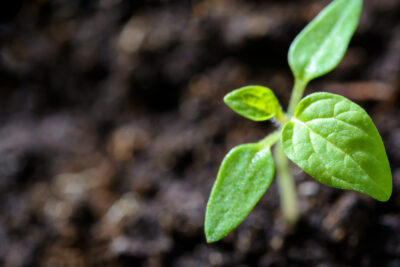
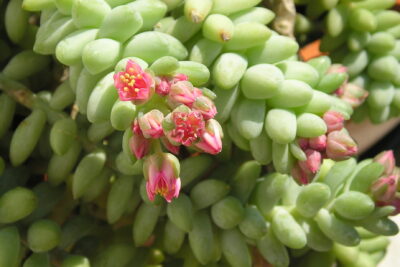



You Must Read